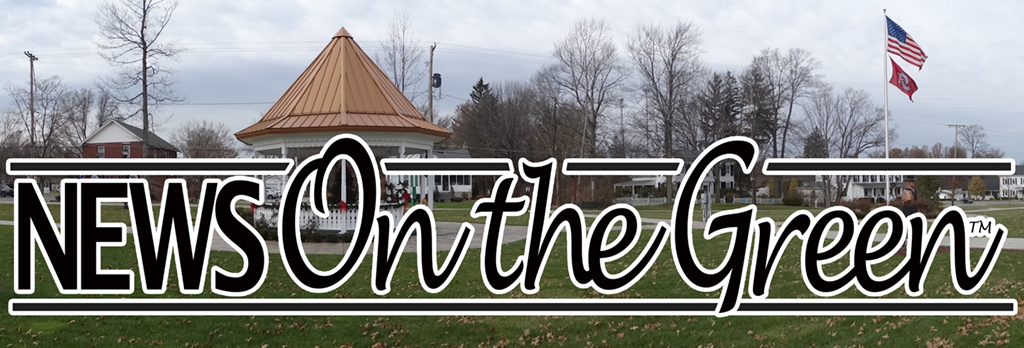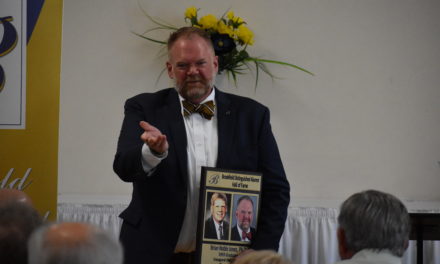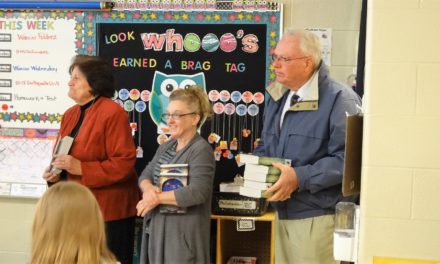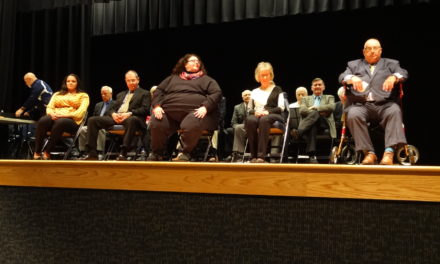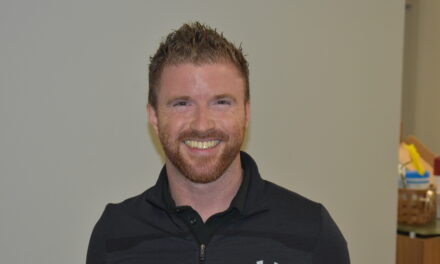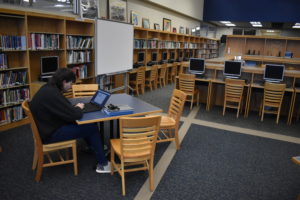
Gavin Clark studies in the Brookfield high school-middle school library, which could become the home for the Maker Space and STEM equipment.
The fact that Brookfield Local Schools has received two state grants totaling more than $1.2 million to create a science, technology, engineering and math program for grades kindergarten through eight and a program to train high school students for industry-recognized credentials is a major boon to the district, but also presents the challenge of where to put all the equipment that comes with the grant.
School Supt. Toby Gibson is studying the feasibility of revamping the high school-middle school library, moving the grant equipment into there, and also moving the Maker Space and its attached computer lab into the library.
The idea does not eliminate the library, just reduces the amount of space dedicated to a traditional library, something that is quickly going out of style with students, he said.
 “With these grants and the other programs we have – we talked about limited space in the district – we’re starting to look at the idea of kind of rethinking what our library media center looks like,” he told the school board Jan. 14. “Right now, it’s (an) old-school library, and it’s not used a bunch. We have some tutoring groups in there or a class may pop in and out, but it’s a lot of dead space. It’s 32 feet by 96 feet. That’s three classrooms.”
“With these grants and the other programs we have – we talked about limited space in the district – we’re starting to look at the idea of kind of rethinking what our library media center looks like,” he told the school board Jan. 14. “Right now, it’s (an) old-school library, and it’s not used a bunch. We have some tutoring groups in there or a class may pop in and out, but it’s a lot of dead space. It’s 32 feet by 96 feet. That’s three classrooms.”
Students in grades three through 12 all are assigned computers, giving them instant access to reference material that, in the past, students would go to a library for, Gibson said.
He also noted that students in grades five through 12 rarely take books out of the library – about 400 books a year from fifth-graders, down to about 50 books a year from high-schoolers.
Gibson is considering reducing the number of books kept in the library by removing out-of-date reference material and duplicate copies of books, and then carving up the library space to accommodate the workforce grant equipment, Maker Space and computer lab and K-8 STEM lab. If this moves forward, the pre-apprenticeship program – a newfangled wood shop program started this year – could move from the scene shop behind the auditorium stage to the larger space now occupied by the Maker Space and computer lab, he said.
The superintendent said he has Buckeye Educational Systems, the company that has provided much of the Maker Space and technology equipment, reviewing the library to see if the plan would work, and teacher George Lesnansky reviewing the library’s holdings.
“In my mind, I don’t see a lot of construction,” he said. “I just see moving some furniture.”
But, he added, “What my mind thinks and what’s actually gonna happen are two different things.”
If the plan goes through, it would not affect the elementary library, which is heavily used as a traditional library.
UPDATE: On Feb. 16, the school board approved the removal of 234 outdated and unused library materials, and Gibson announced that the College Credit Plus lounge, where high school students log in for remote college classes or study, was being moved from inside the library to outside of it.
